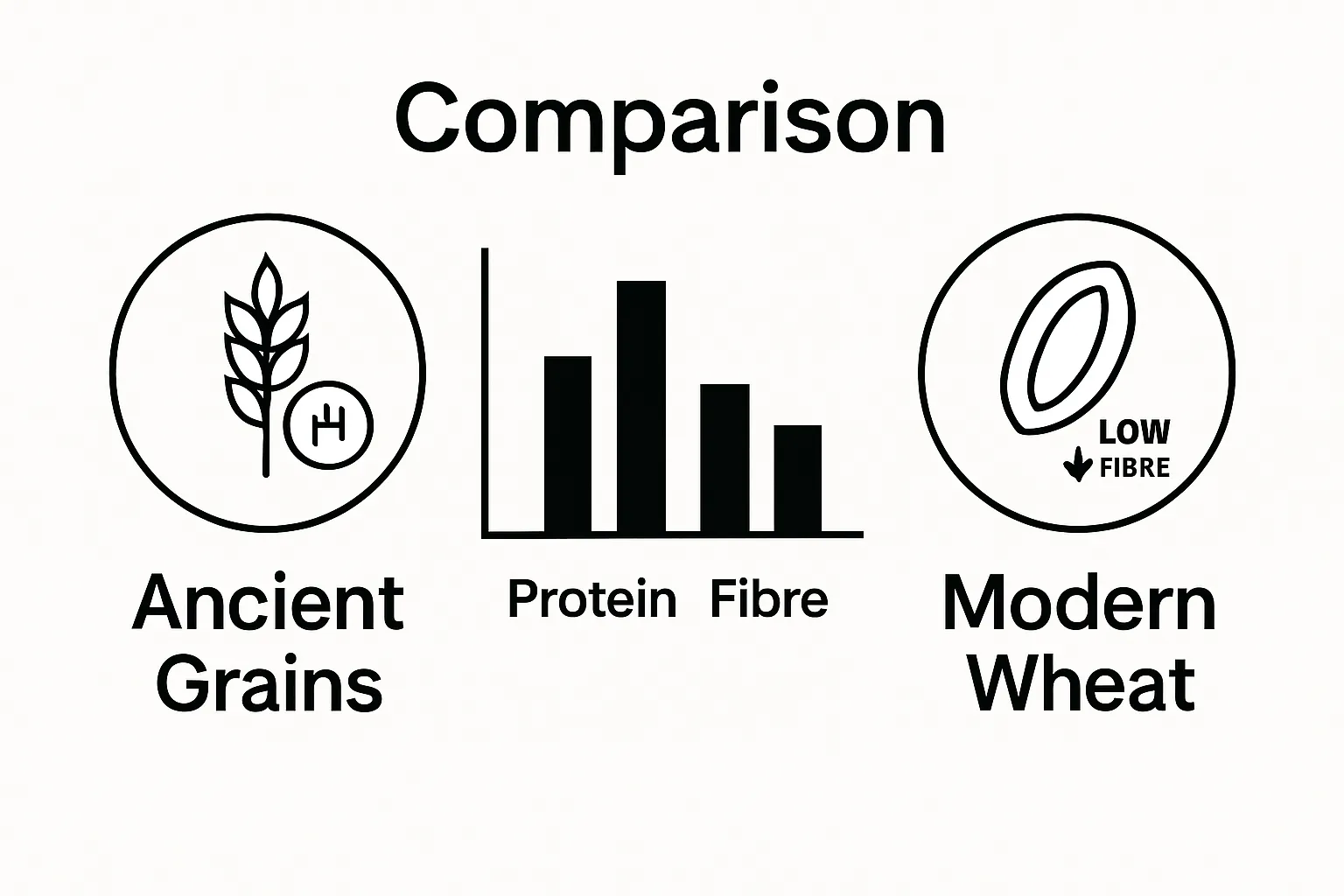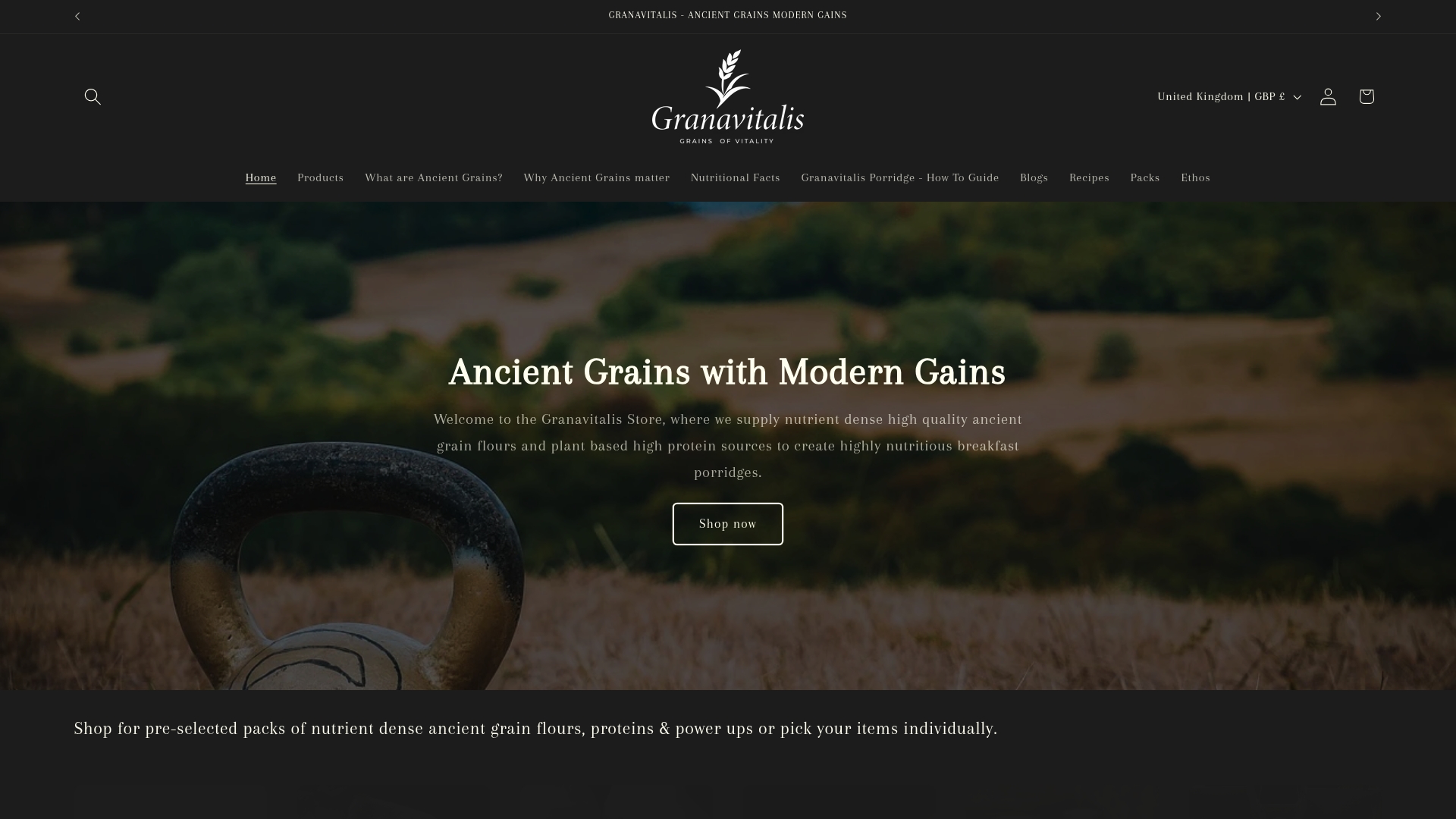
Understanding Why Choose Ancient Grains for Health
Share
Ancient grains have been nourishing humans for thousands of years, quietly sitting at the heart of diets from Egypt to the Andes. Modern wheat might dominate supermarket shelves, but ancient grains keep surprising scientists. Quinoa, amaranth, millet, and teff have been cultivated for over 6,000 years and still hold their original genetic power. While most see them as just a healthy trend, the real surprise is how these grains deliver whole nutrition and resilience that modern varieties have lost. Their legacy and benefits go far beyond the label of a ‘superfood’.
Table of Contents
- What Are Ancient Grains And Their Origins?
- The Nutritional Benefits Of Ancient Grains
- How Ancient Grains Support A Healthy Diet
- Why Ancient Grains Matter For Menopause And Wellbeing
- Exploring Practical Uses Of Ancient Grains In Daily Meals
Quick Summary
| Takeaway | Explanation |
|---|---|
| Ancient grains offer superior nutrition. | They provide higher protein, micronutrients, and fibre than modern grains, supporting overall health. |
| Versatile cooking with ancient grains. | Use grains like quinoa and amaranth in salads, breakfasts, and main dishes for enhanced nutrition. |
| Ancient grains support metabolic health. | Their complex carbohydrates help regulate blood sugar and improve insulin sensitivity, mitigating metabolic issues. |
| Beneficial for menopause wellness. | Ancient grains help manage menopausal symptoms and support bone density with essential nutrients. |
| Invest in nutritional strategy, not diet. | Embracing ancient grains is a commitment to long-term health, blending traditional wisdom with modern science. |
What Are Ancient Grains and Their Origins?
Ancient grains represent a fascinating category of crops that have sustained human civilisations for thousands of years, offering nutritional profiles far more complex and robust than modern wheat varieties. These grains have remained largely unchanged through millennia, preserving their original genetic structures and remarkable nutritional characteristics.
The Timeless Legacy of Ancient Grain Cultivation
Ancient grains trace their origins back to early agricultural societies across multiple continents. Civilisations like the Aztecs, Incas, Egyptians, and early Mesopotamian cultures cultivated these grains as staple food sources, recognising their extraordinary nutritional value. Archaeological evidence from global research suggests that grains such as quinoa, amaranth, millet, and teff have been cultivated for over 6,000 years.
These grains were not merely food but critical survival tools for ancient populations. They thrived in challenging environmental conditions where other crops would fail, demonstrating remarkable resilience. Quinoa, for instance, could grow at high altitudes in the Andes, while millet flourished in arid African landscapes.
Nutritional Characteristics of Ancient Grains
Unlike modern, highly processed wheat varieties, ancient grains maintain their whole grain integrity. This means they retain their bran, germ, and endosperm, preserving essential nutrients. Key nutritional characteristics include:

- Higher protein content compared to conventional grains
- Rich in micronutrients like magnesium, zinc, and B vitamins
- Naturally occurring complex carbohydrates
- Higher fibre content supporting digestive health
By choosing ancient grains, you are not just selecting a food item but embracing a nutritional approach deeply rooted in human evolutionary history. These grains represent more than sustenance they are living connections to our agricultural heritage, offering a nutritional profile that has supported human health for thousands of years.
Understanding ancient grains means recognising them as more than trendy superfoods they are time-tested nutritional powerhouses that have supported human survival across diverse ecosystems and challenging environmental conditions.
The following table provides a concise comparison of key ancient grains mentioned in the article, highlighting their regional origins, notable nutritional features, and unique growing conditions.
| Ancient Grain | Regional Origin | Nutritional Highlights | Notable Growing Conditions |
|---|---|---|---|
| Quinoa | Andes (South America) | Complete protein, high magnesium, fibre | Thrives at high altitudes |
| Amaranth | Central & South America | Complete protein, rich in zinc and B vitamins | Grows in varied climates |
| Millet | Africa, Asia | High in fibre, B vitamins, magnesium | Tolerates arid conditions |
| Teff | Horn of Africa (Ethiopia) | Iron, calcium, resistant starch, protein | Grows in drought-prone areas |
The Nutritional Benefits of Ancient Grains
Ancient grains stand out as nutritional powerhouses, offering a comprehensive profile of health benefits that surpass conventional grain varieties. Their unique composition provides a holistic approach to nutrition, supporting multiple aspects of human wellness beyond basic caloric intake.
Micronutrient and Protein Rich Profile
Nutritional research demonstrates that ancient grains contain significantly higher levels of essential micronutrients compared to modern wheat. Unlike refined grains, they preserve their complete nutritional spectrum, delivering complex nutrients that support metabolic functions. For instance, amaranth provides a remarkable protein profile containing all nine essential amino acids, making it a complete protein source rare among plant-based foods.
Key micronutrient advantages include:
- Higher zinc content supporting immune function
- Enhanced magnesium levels promoting cardiovascular health
- Rich selenium concentrations protecting cellular structures
- Substantial B vitamin complex supporting metabolic processes
Metabolic and Digestive Health Benefits
Ancient grains play a crucial role in supporting metabolic balance and digestive wellness. Their complex carbohydrate structures provide sustained energy release, preventing rapid blood sugar spikes typical with processed grains. Metabolic studies indicate that whole ancient grains can improve insulin sensitivity and reduce inflammation markers.
The high fibre content in ancient grains like quinoa and teff supports gut microbiome diversity and promotes healthy digestive function. These grains act as prebiotics, nourishing beneficial intestinal bacteria and supporting overall digestive system resilience.
Moreover, many individuals with mild wheat sensitivities find ancient grains more digestible, our comprehensive guide on ancient grains and gut health provides deeper insights into this fascinating nutritional aspect.
By incorporating ancient grains into your diet, you are not merely consuming food but investing in a nutritional strategy that has sustained human health for millennia. Their extraordinary nutrient density represents a holistic approach to wellness, bridging traditional nutritional wisdom with contemporary health understanding.

How Ancient Grains Support a Healthy Diet
Ancient grains offer a transformative approach to nutrition, presenting more than just a dietary trend but a comprehensive strategy for supporting overall health and wellness. Their unique nutritional composition provides multifaceted benefits that extend far beyond traditional grain consumption.
Balanced Nutrient Absorption and Metabolic Support
Dietary research demonstrates that whole grains like ancient varieties play a critical role in supporting metabolic health. Unlike processed grains, these nutritional powerhouses deliver sustained energy release, helping regulate blood sugar levels and providing consistent metabolic support.
The complex carbohydrate structures in ancient grains facilitate gradual nutrient absorption, preventing sudden insulin spikes. This steady metabolic process contributes to:
- Improved energy regulation
- Enhanced metabolic efficiency
- Reduced risk of metabolic syndrome
- Sustained cognitive performance
Weight Management and Satiety Mechanisms
Ancient grains excel in supporting healthy weight management through their remarkable satiety properties. Their high protein and fibre content promotes prolonged feelings of fullness, naturally reducing overall caloric intake. Nutritional studies indicate that individuals consuming whole grain diets experience more consistent appetite control compared to those consuming refined grain products.
The protein-rich profile of grains like quinoa and amaranth makes them particularly effective for maintaining muscle mass while supporting weight management goals. By providing essential amino acids and complex nutrients, these grains help create a balanced nutritional environment that supports healthy body composition.
Our comprehensive guide on ancient grains and satiety effects offers deeper insights into how these remarkable foods can transform your dietary approach.
Integrating ancient grains represents more than a dietary choice it is a holistic nutritional strategy that connects traditional wisdom with modern health science. By embracing these nutrient-dense foods, you are investing in a proactive approach to wellness that supports your body’s natural metabolic processes.
Why Ancient Grains Matter for Menopause and Wellbeing
Menopause represents a transformative phase in a woman’s life, characterised by significant hormonal shifts that impact metabolic function, bone density, and overall wellness. Ancient grains emerge as a critical nutritional ally during this complex transition, offering targeted support through their exceptional nutrient profile.
Hormonal Balance and Metabolic Support
Scientific research reveals that whole grains play a crucial role in managing menopausal symptoms by supporting hormonal equilibrium. Ancient grains contain phytoestrogens, natural compounds that can help mitigate the dramatic hormonal fluctuations characteristic of menopause.
The unique nutritional composition of ancient grains provides comprehensive metabolic support through:
- Natural hormone regulation mechanisms
- Stabilisation of blood sugar levels
- Reduction of inflammation markers
- Enhanced metabolic flexibility
Bone Health and Nutritional Density
During menopause, women experience accelerated bone density loss due to declining oestrogen levels. Ancient grains offer a strategic nutritional intervention by providing essential minerals critical for maintaining skeletal integrity. Grains like quinoa and amaranth are particularly rich in magnesium, calcium, and phosphorus, nutrients fundamental to bone metabolism.
Moreover, the high protein content in these grains supports muscle maintenance, which becomes increasingly important as metabolic rates naturally slow during hormonal transitions. By preserving muscle mass, women can maintain metabolic efficiency and support overall physical resilience.
Our comprehensive guide on menopause wellness and ancient grains provides deeper insights into these remarkable nutritional strategies.
Choosing ancient grains during menopause is more than a dietary decision it represents a proactive approach to holistic wellness.
This table summarises the specific benefits of ancient grains for women during menopause, aligning particular nutrients and their roles with targeted menopausal health outcomes.
| Benefit Area | Related Ancient Grain(s) | Key Nutrients | Supportive Role During Menopause |
|---|---|---|---|
| Bone health | Quinoa, Amaranth | Magnesium, calcium | Maintains skeletal integrity |
| Hormonal balance | Various | Phytoestrogens | Helps stabilise hormonal fluctuations |
| Metabolic support | All (esp. quinoa, millet) | Complex carbs, fibre | Supports stable blood sugar, reduces inflammation |
| Muscle maintenance | Amaranth, Quinoa | Complete protein | Preserves muscle mass as metabolism slows |
These nutrient-dense foods offer a natural, scientifically supported method of navigating the complex physiological changes associated with this significant life stage, empowering women to embrace their health journey with confidence and nutritional intelligence.
Exploring Practical Uses of Ancient Grains in Daily Meals
Integrating ancient grains into everyday cooking transforms mundane meals into nutritional powerhouses, offering versatile and delicious alternatives to conventional grain options. Their distinctive textures, flavours, and nutritional profiles make them exceptional ingredients for creative home cooking and mindful nutrition.
Breakfast and Morning Meal Transformations
Culinary research highlights how ancient grains can revolutionise morning nutrition. Quinoa, amaranth, and millet provide remarkable flexibility, functioning brilliantly in porridges, overnight soaks, and breakfast bowls. These grains offer complete protein profiles and sustained energy release, making them superior alternatives to processed breakfast cereals.
Practical morning preparation strategies include:
- Creating overnight protein-rich porridge mixes
- Preparing quick grain breakfast bowls
- Developing batch-cook breakfast options
- Blending grains into morning smoothies
Versatile Cooking and Meal Preparation Techniques
Ancient grains transcend traditional boundaries, serving as exceptional ingredients in salads, main courses, and baking. Teff works brilliantly in flatbreads, while amaranth provides exceptional binding properties for veggie patties. Quinoa seamlessly replaces rice in numerous recipes, offering enhanced nutritional complexity.
The adaptability of these grains allows for creative culinary exploration. Grain-based salads, protein-rich grain bowls, and innovative baking techniques demonstrate their remarkable versatility. Home cooks can effortlessly transform traditional recipes by substituting conventional grains with these nutrient-dense alternatives.
Our comprehensive guide on understanding ancient grains provides additional insights into maximising these remarkable ingredients.
Embracing ancient grains represents more than a dietary choice it is a commitment to nutritional intelligence and culinary creativity. By introducing these extraordinary ingredients into daily meals, you unlock a world of flavour, nutrition, and gastronomic potential that transcends ordinary eating experiences.
Experience True Nourishment with Ancient Grains from Granavitalis
Are you frustrated with breakfast choices that leave you feeling hungry and fatigued? This article highlights how ancient grains deliver superior nutritional benefits, offering sustained energy, balanced metabolism, and vital micronutrients. If you are searching for food that genuinely supports long-term health and aligns with tradition, now is the perfect time to explore better options. Discover our carefully curated selection in the All Flours collection, each chosen for purity and ancient heritage.

Commit to a new morning routine by choosing ancient grains that nourish body and mind. Visit Granavitalis to find thoughtfully crafted protein blends and Protein Power Packs designed with your wellness in mind. Choose a breakfast that sustains, not compromises. Make the change today and feel the difference in every bowl.
Frequently Asked Questions
What are ancient grains and why are they healthier than modern grains?
Ancient grains are crops that have remained largely unchanged for thousands of years, such as quinoa, amaranth, and millet. They retain their whole grain integrity, preserving vital nutrients, higher protein content, and beneficial micronutrients, making them healthier than many modern, processed grains.
How do ancient grains support digestive health?
Ancient grains are rich in dietary fibre, which promotes a healthy gut microbiome and supports digestive wellness. Their complex carbohydrate structures also provide gradual energy release, reducing the risk of blood sugar spikes and aiding in digestive health.
Can ancient grains help with weight management?
Yes, ancient grains are high in protein and fibre, which can promote feelings of fullness and reduce overall caloric intake. This satiety effect, along with their balanced nutrient absorption, supports healthy weight management strategies.
How do ancient grains benefit women during menopause?
Ancient grains provide critical support during menopause by supplying essential nutrients like magnesium and calcium, which are vital for bone health. They also contain phytoestrogens that can help stabilize hormonal fluctuations, thereby alleviating menopausal symptoms.
